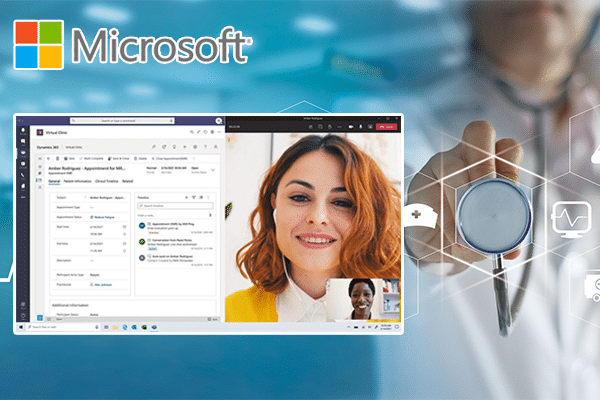
Michael Joe Cini
5th March 2021
Microsoft updates Cloud for Healthcare with new features for virtual health
Microsoft updates their Cloud for Healthcare, offering new virtual care opportunities and remote patient monitoring launching in April
Microsoft has announced new updates to their Cloud for Healthcare in bit to build resilient models of care set to launch in April. According to a press release on their website, this will include “continuous patient monitoring, and care coordination, and support for eight new languages” in bid to promote virtual health.
The COVID-19 pandemic has challenged healthcare professional to adopt to a more distanced way of living. Microsoft’s Cloud for Healthcare integrate technology and healthcare in bid to make social distancing commonplace, as well as virtual health and remote appointments. According to the company, such initiatives are ” more important than ever”.
The tech giant had announced their Cloud for Healthcare service in October 2020. It merges together Microsoft’s existing services like Teams, Azure IoT (a virtual health assistant) and chatbots to help healthcare firms execute operations.
Not only will the updates push Med-Tech adoption but it will help expand access to care during times when access to healthcare is restricted.
Moreover, via Microsoft Teams, patients and clinicians can schedule and host virtual sessions on the app or in collaboration with the Epic electronic health records (EHRs) system. Diving deeper into the specifics of the updates, Tom McGuinness, corporate vice president, worldwide health at Microsoft, explains:
We’re introducing new Microsoft Dynamics 365 patient access features to streamline the virtual experience for patients by allowing more flexibility in self-scheduling both virtual and in-person appointments through their existing patient portal and integrating virtual health assistants, like the Azure Health Bot service, for triaging, scheduling, and making it seamless to receive follow-up and wellness guidance from their care team,
Additionally, care coordination and patient monitoring is at the forefront of the initiative. Microsoft Cloud for Healthcare’s new device management feature ‘Continuous Patient Monitoring’ allows healthcare organisations to provide remote/wearable monitoring devices. This includes heartbeat monitors and blood pressure monitors.
McGuinness adds:
Within the patient view feature, care coordinators can set care thresholds for a patient, or patient populations, based on a device or condition for individual patients. Care coordinators can enable integrated access between physicians, care managers, and at-home caregivers to deploy digital coaching or care plan navigation tools tailored to patient needs. Inside the health organization, Microsoft Teams provides a highly secure care collaboration channel to providers, care managers, and others involved in their care.
Source: Fierce Healthcare






